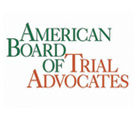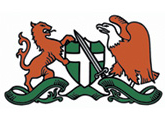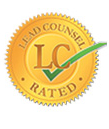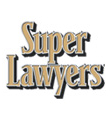One of the smartest things that a vehicle occupant can do is wear a seatbelt. That’s why it is recommended and the law to wear a belt once you occupy a vehicle. A belt can protect you from severe injuries and damages once an accident occurs. However, seatbelt failure can lead to injuries once a car is involved in an accident. You have the right to hold the at-fault party liable for your accident if you are involved in this situation. At Los Angeles Car Accident Attorney, we offer exceptional legal services to anyone claiming compensation after sustaining damages due to seatbelt failure.
How Seat Belts Protect a Vehicle’s Occupant
Seat belts protect vehicle occupants in five different ways. A seatbelt can protect a vehicle’s occupant in the following ways.
Keeps the Occupants Inside the Vehicle
Occupants inside a vehicle are thrown off into a forward motion once a car is involved in an accident or sudden stoppage. However, with a seatbelt, you are four times likely to survive a crash since it will restrain you from any movement.
Seat Belts Restrain the Strongest Body Part
Seat belts have the design to contact the strongest part of the body. For an older child or an adult, these parts include the shoulder and the hips, which are restrained by the belt.
Seat belts Spread the Collision Force
The lap-and-shoulder belt spreads the force evenly over the broader area of the body. When there is less stress applied in one area, there is a lower possibility of getting a severe injury. A shoulder strap also restrains the head and upper body from hitting the steering wheel or away from the dashboard. It also protects these parts from the interior parts of your car once you make a sudden stop or are hit by another vehicle.
Slows Down the Body
A quick change in speed causes an injury during an accident. A seat belt would help in extending the time spent in hitting the interior of a vehicle during a crash.
Seat Belts Protect Vital Organs such as the Brain and Spinal Cord
A seat belt has the design to protect your brain and spinal cord. Head injuries can be hard to trace immediately, but they can be deadly if sustained. Also, spinal cord injuries can lead to severe consequences.
Causes of Seat Belt Failure
In most cases, seatbelt failure occurs due to design, manufacturing, and installation flaws. It is crucial to learn about these flaws if you want to effectively seek compensation for the injuries sustained due to seatbelt failure. These possible causes are as follows.
Inertial Unlatching
Faulty seat belts can unlatch once there is inertia. Inertia is a force that results from an external force, which is the force produced during a collision. Most auto manufacturers deny that inertia unlatching can happen, but tests have proven that the force during a crash can cause seat belts to be unlocked.
False Latching
Your belt might appear and feel to be securely attached, but it might not be fully engaged. If it is not, a minor accident will cause the belt to release and leave you unprotected. One of the renowned experiences related to this issue is the Takata seat belt recall of 1995 that involved more than 8 million vehicles, including 12 makes.
Webbing Defect
Seat belts are constructed to withstand high degrees of force. Therefore, if a seatbelt rips off for no reason, there must be a webbing defect, which might lead to severe injuries.
Retractor Failure
A retractor is meant to lock and hold the occupant in place once an accident occurs. If this locking device fails or excess slack is released, it might turn out to be deadly.
Poorly-Mounted Systems
Effective seat belt anchor systems should be mounted on the seat of a vehicle. Other locations lead to a poor seat geometry since there is no functionality between the seat belt and the seat. This diminishes the effectiveness of the seatbelt, leading to severe injuries during an accident.
Spooling
Spooling occurs when an excess amount of the seatbelt feeds out, meaning that there is too much belt that can adequately restrain a passenger during a collision. This could lead to severe or fatal injuries depending on the extent of the crash.
Apart from the causes provided above, there are other causes of seat belt failure that you should know about. These causes are as follows:
-
Airbag ECUs (When pretensioners are connected to the airbag system)
-
Passive restraint seat belts that automatically belt you in
-
Anchor (components bolted to the vehicle) failure
-
Door- mounted seat belts malfunction. This is a type of seatbelt that is known to eject to allow occupants to leave their cars once the door has been opened.
All the above causes fall under three categories of product defects. This forms the basis of your liability claim when a part of your vehicle such as a seatbelt was responsible for your injuries. These three types of defects are categorized as follows.
Design Defects
A design defect happens when a seatbelt is inherently dangerous because the design was not safe enough. This happens even when the product was manufactured according to the specifications of the manufacturer. The only correct way to deal with this kind defect is by changing the design and creating an entirely different product.
Manufacturing Defect
If a seatbelt comes through a manufacturing process incorrectly or is improperly assembled, it might lead to a manufacturing defect. You have to prove that your seatbelt failure was a result of a manufacturing defect if you want to rely on this as a cause of your damages.
Inadequate Warnings
Sometimes a seatbelt might have the right design or manufacture. But fail to have adequate warnings to its consumers. Manufacturers usually warn their consumers about a possible risk of their product through a label on the specific product. Therefore, if your defective seat belt did not have sufficient warning, you would establish your case on this fact.
Responsible Parties For Defective Seat Belts
You can hold the seatbelt and car manufacture when you sustain injuries due to seatbelt failure. Seat belt designers put a lot of effort into ensuring that their products are effective, but sometimes their plan does not work as expected. It is the responsibility of both the seatbelt and car manufacturers to test their seat belts and ensure that they maintain the safety of people who will be using their vehicles.
Some manufacturers are slow in rolling out new technology that might protect their clients and use outdated seat belt systems. Such manufacturers should be held liable for the injuries and damages that result from the failure of their seat belts.
Apart from the seat manufacturer and the designer, you can hold other parties liable for the injuries sustained due to seatbelt failure. The following are other potential parties that can be held liable for your injuries and damages.
Automotive Supply Shop
The person or shop that sold you the vehicle can be held liable for your damages even if you were not the actual buyer. The auto dealer has the responsibility of ensuring that their vehicles are safe enough for their clients, making them part of the parties that can be held responsible for accidents or damages related to their vehicles.
Shipper or Middleman
Any shipper or middleman involved in the chain of distribution between the manufacturer and the retailer or the product manufacturer and the vehicle manufacturer should be held liable for your damages. The middleman or shipper can only be held liable if you can establish that the seatbelt failure is based on something related to the shipper.
Used Car Dealer
Even when you bought a used car, it does not mean that it should have defective products. Therefore, if you experience any seat belt failure, you need to hold the dealer responsible for your accident.
Joint Liability
There are situations where there is more than one party involved in a seatbelt failure. For instance, the manufacturer, distributor, and retailer can be found liable for your damages. In such a situation, all the parties can be held liable for the damages or injuries sustained in your accident. You can hold more than a single party liable for your damages if you can successfully establish their contribution towards the defective seatbelt. Further investigations into this kind of situation should help you determine the percentage of liability of every party involved.
How to Detect Seat Belt Failure After an Accident
Detecting a seat belt failure is not as easy as it seems. The effectiveness of your vehicle’s seat belt can be evaluated through the extent of injuries sustained by the victim. Here are a few signs that might indicate a seat belt problem.
-
A loose-fitting belt on a person who has been injured in a car accident
-
Failure to wear a seatbelt and the victim is claiming that he or she was strapped on during the accident
-
Ripped or worn out webbing
-
Serious injuries during a collision
-
Making contact with the windshield as a front seat occupant after a sudden stop or collision
-
A significant discrepancy in the seriousness of the injuries sustained by all belted occupants. In most cases, one of the people ends up with severe injuries, while the other gets minor ones.
Injuries that Result from Seatbelt Failure
The kind of injuries that a person can sustain when a seatbelt beaks can be minor or severe, depending on the extent of the accident. Most of these injuries affect both the upper and lower parts of the body. Let’s look at the possible injuries that a person can sustain due to seatbelt failure.
Head Injuries
Head injuries are among the most common types of injuries sustained in a car accident. There are different types of injuries that a person can get, which vary depending on the extent of the accident. These types include:
-
Concussion - This is a type of traumatic brain injury (TBI) that occurs when the brain strikes the inside part of the skull due to a sudden change of momentum.
-
Contusion – A contusion is a bruise on the brain that results from a direct impact on the head. This occurs when the head hits on a fixed object inside the vehicle such as the steering wheel
-
Penetration – A penetration occurs when an object penetrates your skull. These objects might be inside the car or outside, depending on the position of your sitting and the nature of your crash site.
Chest Injury
Chest injuries are injuries to the chest wall or any other organ inside the chest. This injury can vary from minor cases such as bruising to severe cases such as rib fracture and damage to the lungs or heart. Fractured ribs are common and can be fatal if one does not seek immediate medical attention.
Upper Extremity Fractures
The upper extremity areas include the shoulder, wrist, and hand. The slightest impact of any of the upper extremity areas can have a significant effect on the quality of life. Seeking treatment for this type of injury can be costly since it can involve a surgical procedure and a rehabilitation process.
Lower Extremity Fracture
Lower extremity fracture involves all areas below the waist. You could incur this kind of damage if you were not well strapped to your vehicle’s seat during an accident. Some lower extremity fractures can be severe and painful, leading to extensive and expensive medical attention.
Spinal Injury
A spinal injury or damage can involve any part of the spinal cord or the nerves. This kind of injury could lead to permanent effects if the accident was quite severe. One of the common effects of spinal cord injury is paralysis. This can affect the upper or lower body. Paralysis on the upper body is referred to as tetraplegia. On the other hand, paralysis on the lower body is referred to as paraplegia. Dealing with these effects can be costly and can last for a lifetime.
Types of Damages Incurred from Seatbelt Failure
You can claim different types of damages if you have sustained injuries due to seatbelt failure. Damages are referred to as monetary compensation that a victim can get after a car accident. They vary depending on the kind of losses and extent of injuries sustained in an accident. Some of the common types of damages that a victim can recover are as follows:
Medical Expenses
Medical expenses involve all costs incurred in your treatment. It includes costs incurred in your physical or cognitive therapy, ambulance fee, consultations, accessories, and other related costs.
Pain and Suffering
Pain and suffering involve the physical or mental distress incurred after an accident. You need to seek compensation for this kind of damage based on the extent of the injuries that you have suffered. You might also seek compensation for this damage if you experience stress or anxiety due to the injury.
Lost Wages
You might lose your earning capacity after an accident. This includes the inability to work due to the time you have spent in a hospital, a problem with mobility, physical therapy, or any other situation that might affect your earning capacity.
Loss of Companionship and Affection
If you are married, an injury might deprive you of showing affection to your partner, including sexual activities. This is legally defined as a loss of consortium. This kind of damage is different from others since it is claimed by the uninjured spouse.
Wrongful Death
Wrongful death is a type of compensation claim made by an immediate member of a deceased car accident victim. It allows family members to claim compensation for medical expenses, lost wages, pain and suffering, and other types of damages incurred by the deceased car accident victim.
How to Seek Compensation for Damages Related to Seatbelt Failure
The process of claiming compensation after a seatbelt failure is quite complicated. It can be complicated since it involves holding the auto manufacturer or designer liable for the accident. The essential step in seeking compensation is by establishing that your injuries were a result of seat belt failure.
You can establish that the injuries were as a result of the seatbelt failure, depending on your assessment of the aftermath of the car accident. You can also verify that your injuries were a result of the seatbelt failure if there are other lawsuits filed against the same issue. Finally, you can prove the seat belt liability using different pieces of evidence. These pieces of evidence include:
Witness Statement
Independent eyewitnesses have a significant weight on juries and judges than witnesses from friends and family members. They are less likely to prejudice their testimonies since they have no personal or financial interest in the outcome of a claim.
Photograph and Videos
Photograph and video evidence developed from an accident scene broken car parts and the injuries sustained from an accident would be valuable in your claim. You should take pictures from different angles to be familiar with the extent and nature of the accident.
Financial Statements
Your financial losses are essential in your claim. You need to request a letter from your employers to confirm that you lost your wages due to the injuries sustained in the car accident.
Medical Records
Medical helps in establishing that you sustained injuries due to the seat belt failure. These kinds of records provide straightforward evidence of the amount spent in treating your injuries.
Elements of Your Compensation Claim
Since you will have sustained damages due to a defective seatbelt, you should learn how the law would require you to establish the validity and legitimacy of your claim. Generally, when you are establishing this kind of claim, you need to prove four crucial elements. These elements are as follows.
-
The Seat belt Caused your Injuries and Losses
Seat belt failure might cause a high risk of injuries. However, you cannot establish that the liability was a result of the problem unless you sustain injuries or suffer damages due to the failed seatbelt.
-
The Seat belt that Led to your Injury was Defective
You should prove that the seatbelt that led to your injuries was defective due to a manufacturing or design defect. If you can be able to prove that the defect or dangerous quality of the seatbelt was not obvious to anyone, and the manufacturer did not give any warning about this, you can easily rely on this element in your claim.
-
The Defect of the Seatbelt Led to Your Injury
You should prove that the defective seat belt is proximate to your injuries if you want to rely on this element. If you cannot establish the direct connection between these two aspects, using this element would be challenging.
-
You were Using the Seatbelt Properly
You cannot be successful in your claim if you cannot prove that you were effectively using the seatbelt when you were involved in the accident. Liable parties would only consider your claim if you were using the seatbelt as per their instructions.
Statute of Limitations in Your Claim
If you are filing a personal injury claim after a car accident, you have two years to bring the case to court. Failing to honor this time limit would cause your claim to be forever barred from being brought to the court.
If you were involved in the car accident in a state or local vehicle, the statute of limitations is six months after the accident. In most cases, government entities usually deny such claims. In such a case, you have six months from the date of denial to file another lawsuit against the at-fault government entity.
When you are filing a wrongful death claim, you have two years to recover. However, the date of filing starts from the date of death rather than the date of the accident. It is always important to seek professional legal services immediately after an accident to avoid missing the time limitation that you have to file your case.
Find a Car Accident Lawyer Near Me
If you or your loved one has been injured due to seatbelt failure, you should seek legal services as soon as possible if you want to succeed in your compensation claim. At Los Angeles Car Accident Attorney, we are committed to protecting our clients’ interests and rights in Los Angeles and surrounding areas who have sustained injuries due to seatbelt failure. We utilize aggressive litigation combined with our attorneys’ experience to get the most favorable results for our clients. Call us at 424-237-3600 and schedule a consultation.






